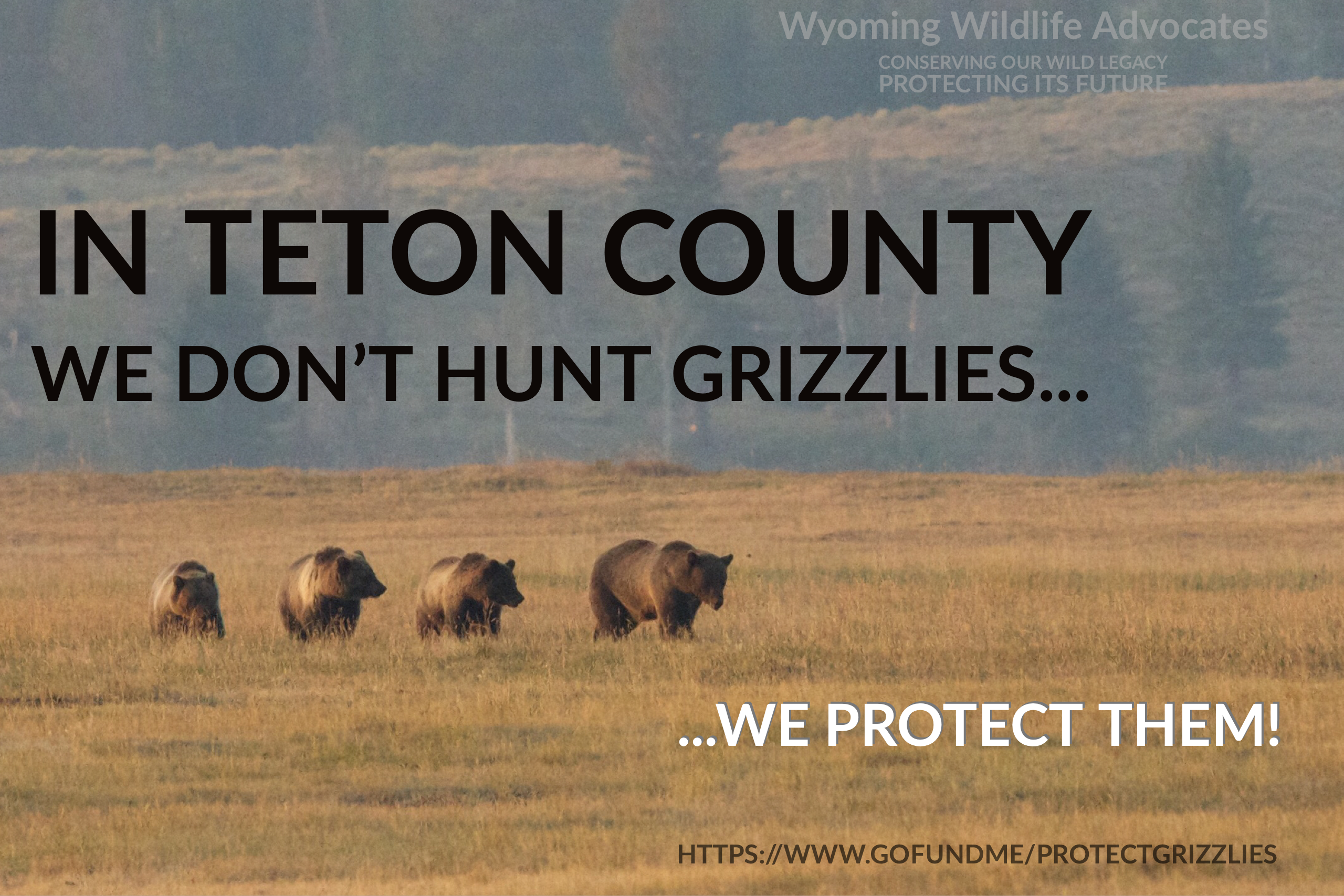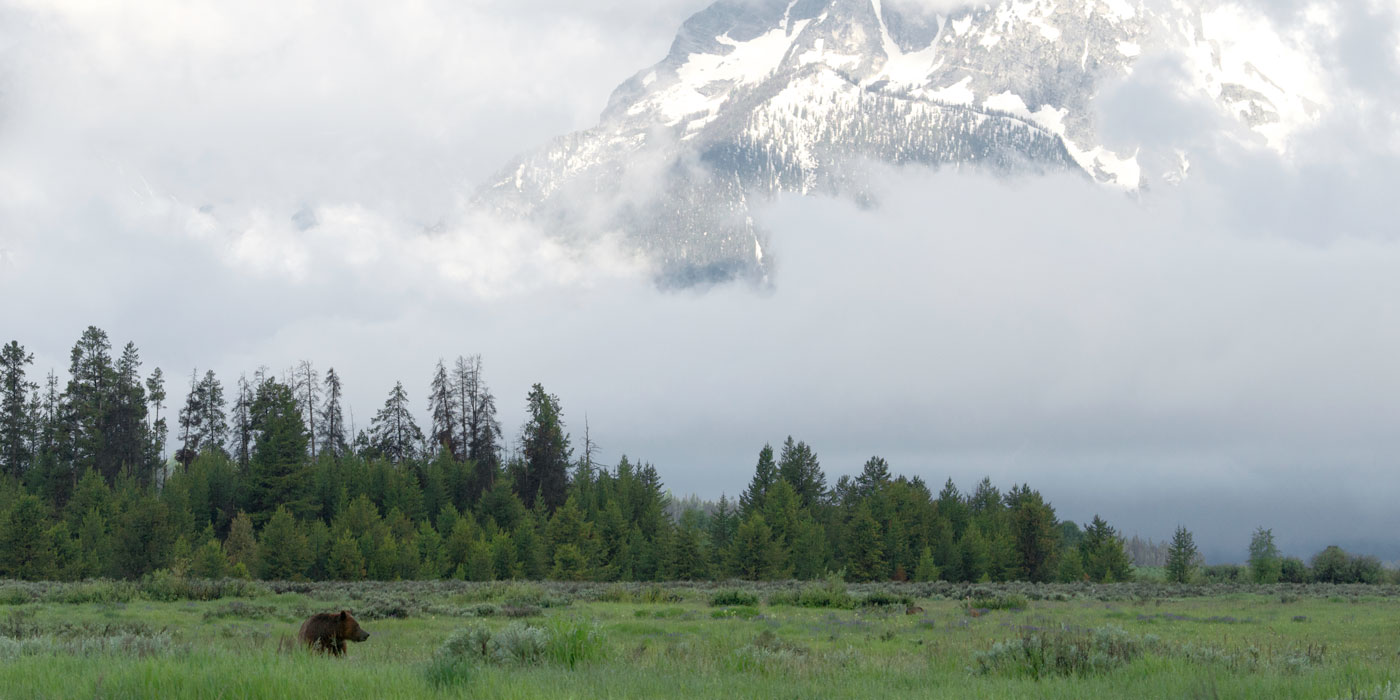Public misconceptions remain regarding conflict management
Bonnie Rice, Sierra Club, (406) 640-2847, bonnie.rice@sierraclub.org
Jocelyn Leroux, Western Watersheds Project, (406) 960-4164, jocelyn@westernwatersheds.org
Kristin Combs, Wyoming Wildlife Advocates, (307) 413-4116, kristin@wyowild.org
Montana— A recent survey of Montana residents by Montana Fish Wildlife and Parks (FWP) and the Human Dimensions Lab at the University of Montana shows that Montana residents overwhelmingly hold positive attitudes toward grizzly bears. Eighty-five percent agree that grizzly bears are part of what makes Montana special. Eighty-one percent enjoy knowing grizzly bears exist in Montana even if they never see one, and 80% believe grizzly bears are important for ecosystem health.
Despite this overwhelming public support, several bills are now making their way through the Montana legislature that would inhibit recovery of grizzly bears– including a bill that will make it harder for grizzly bears in isolated populations in the state to connect with each other. Several other bills will likely result in grizzlies being caught in body-gripping traps or snares. The extreme anti-carnivore focus in the state legislature demonstrated in these and other bills is of particular concern in light of the 5-year review and status assessment for the grizzly bear released last week by the U.S. Fish and Wildlife Service, in which the agency concluded, “…[T]here is enough future uncertainty associated with conservation efforts, such that the grizzly bear in the lower 48 States remains likely to become in danger of extinction within the foreseeable future throughout all of its range.”
Not surprisingly, results from the survey demonstrate that acceptance of bears declines relative to human residence and agricultural-ranching use of the landscape. However, 75% of Montanans think it is important to have a self-sustaining grizzly bear population in the state, and 92% are willing to take actions to reduce causes of bear-human conflict, such as securing attractants on their property. A majority (63%) of livestock producers had or would be willing to alter livestock practices to mitigate the risk of grizzly bear predation.
A 2018 landmark study of Americans’ wildlife values found that Montanans’ wildlife values have shifted dramatically since a similar, earlier 2004 study. The number of “Traditionalists” (wildlife should be managed and used for the benefit of people) have decreased by 18%, while the number of “Mutualists” (wildlife as part of extended social network and people and wildlife should co-exist) increased by 40%. Those shifts in values have allowed Montana’s wildlife-related tourism to flourish (see: e.g., this photographers’ letter urging Montana Governor Greg Gianforte to veto extreme anti-carnivore bills in the state legislature).
Survey responses reveal remaining public misconceptions about the role of hunting in preventing conflicts between bears and people. Addressing these misconceptions is important in achieving the “self-sustaining grizzly population” that Montanans favor. Misconceptions include the belief that hunting will resolve conflicts between people and bears, and that hunting will cause bears to fear humans, both of which have been refuted by experts in grizzly bear management.
Grizzly bear conservation advocates urge FWP to make public education on bear smart communities and the utilization of proven methods of conflict prevention the agency’s top priorities for grizzly bear management. That should include methods such as electric fencing, carcass removal, securing attractants and bear resistant sanitation practices. Additionally, in order to dispel commonly-held public misconceptions advocates call on FWP to clearly explain in its public messaging why hunting does not prevent conflicts between grizzlies and people or make bears more fearful of people, and to articulate the effectiveness of bear spray over firearms in preventing injury to both people and bears.
Photo: Roger Hayden






